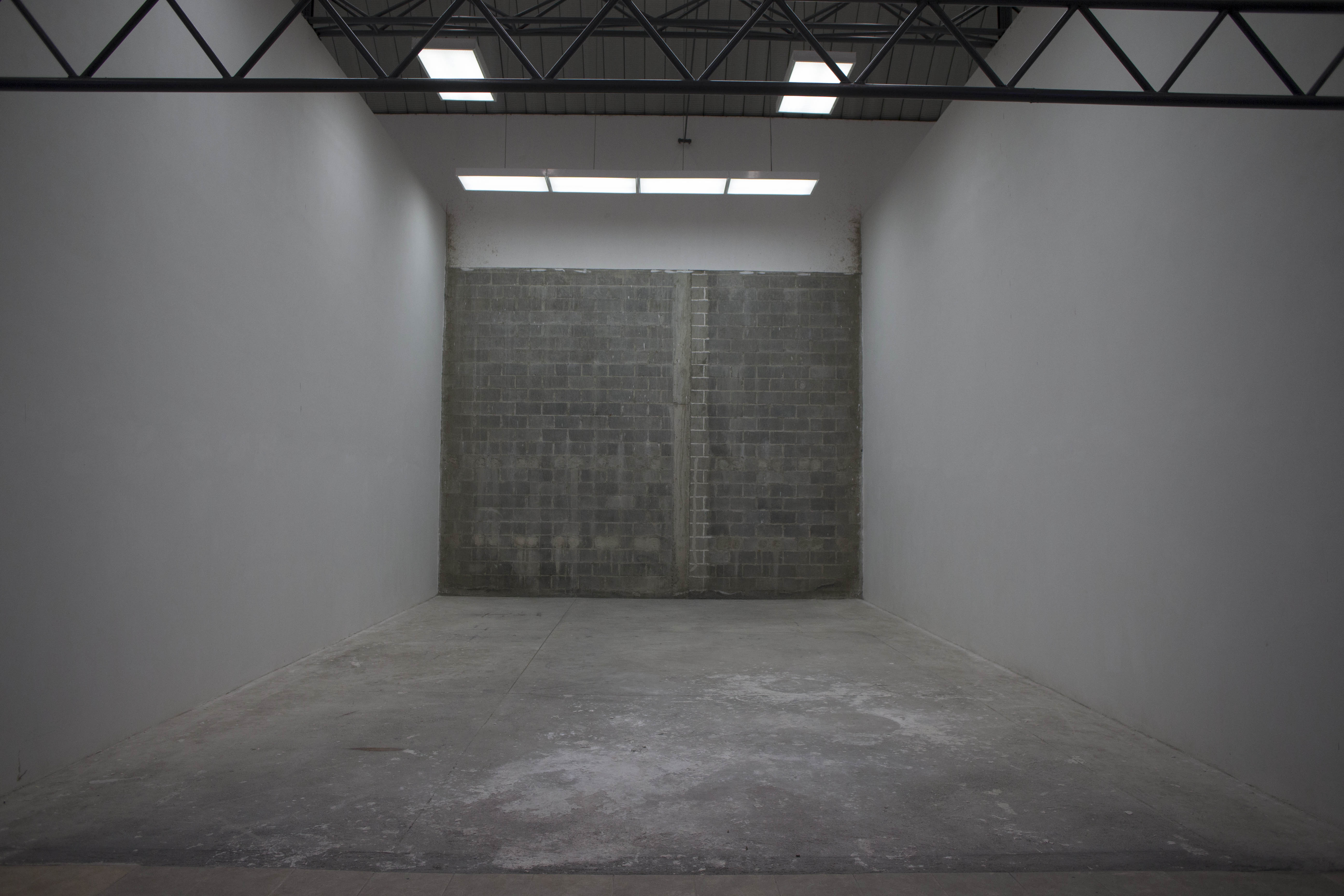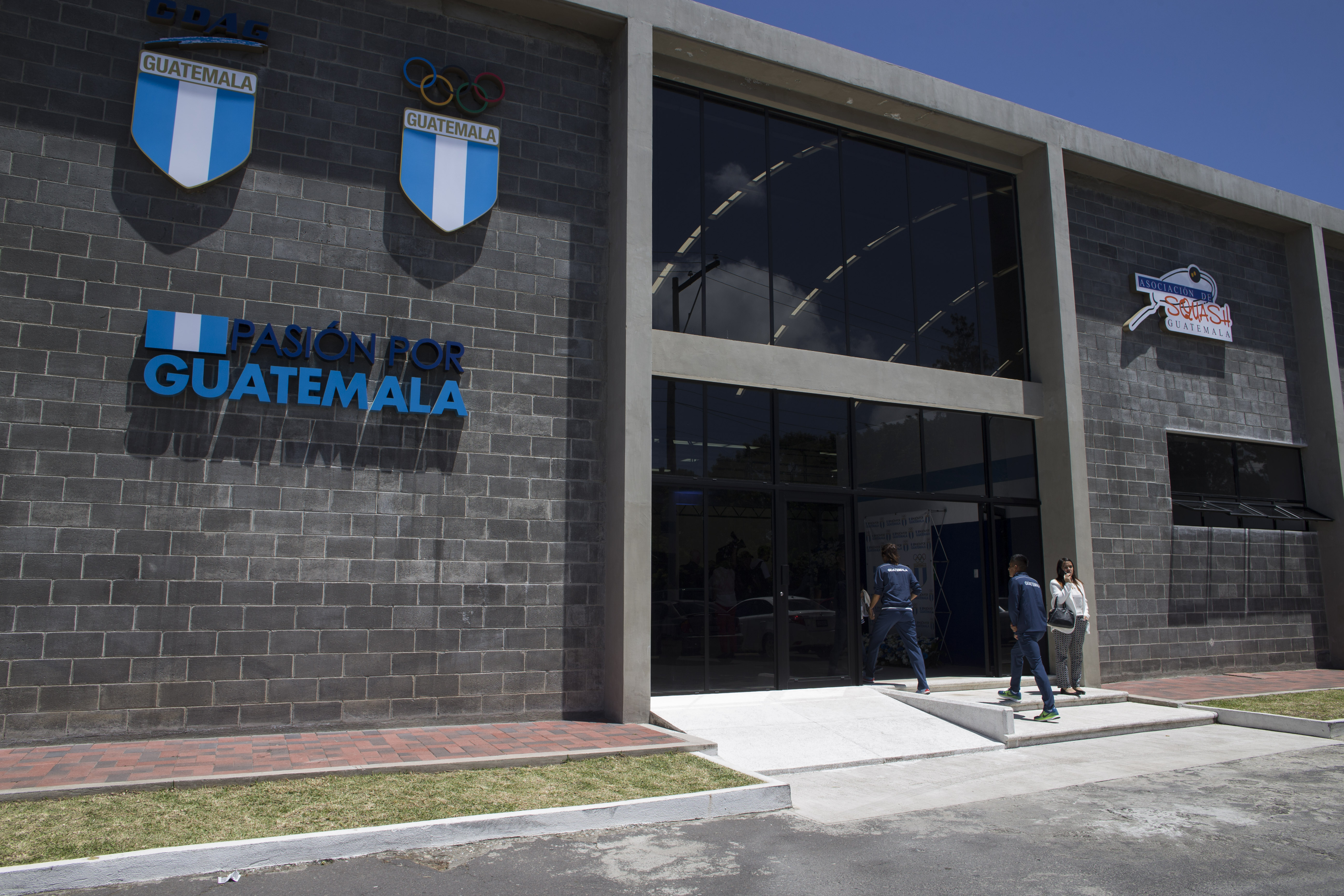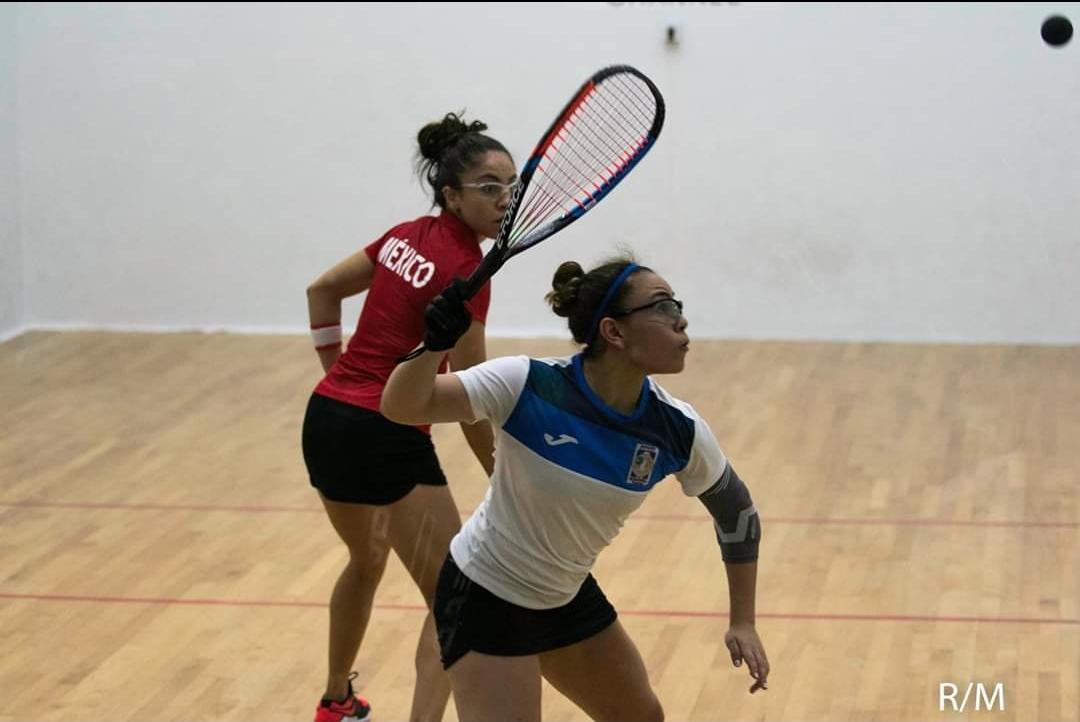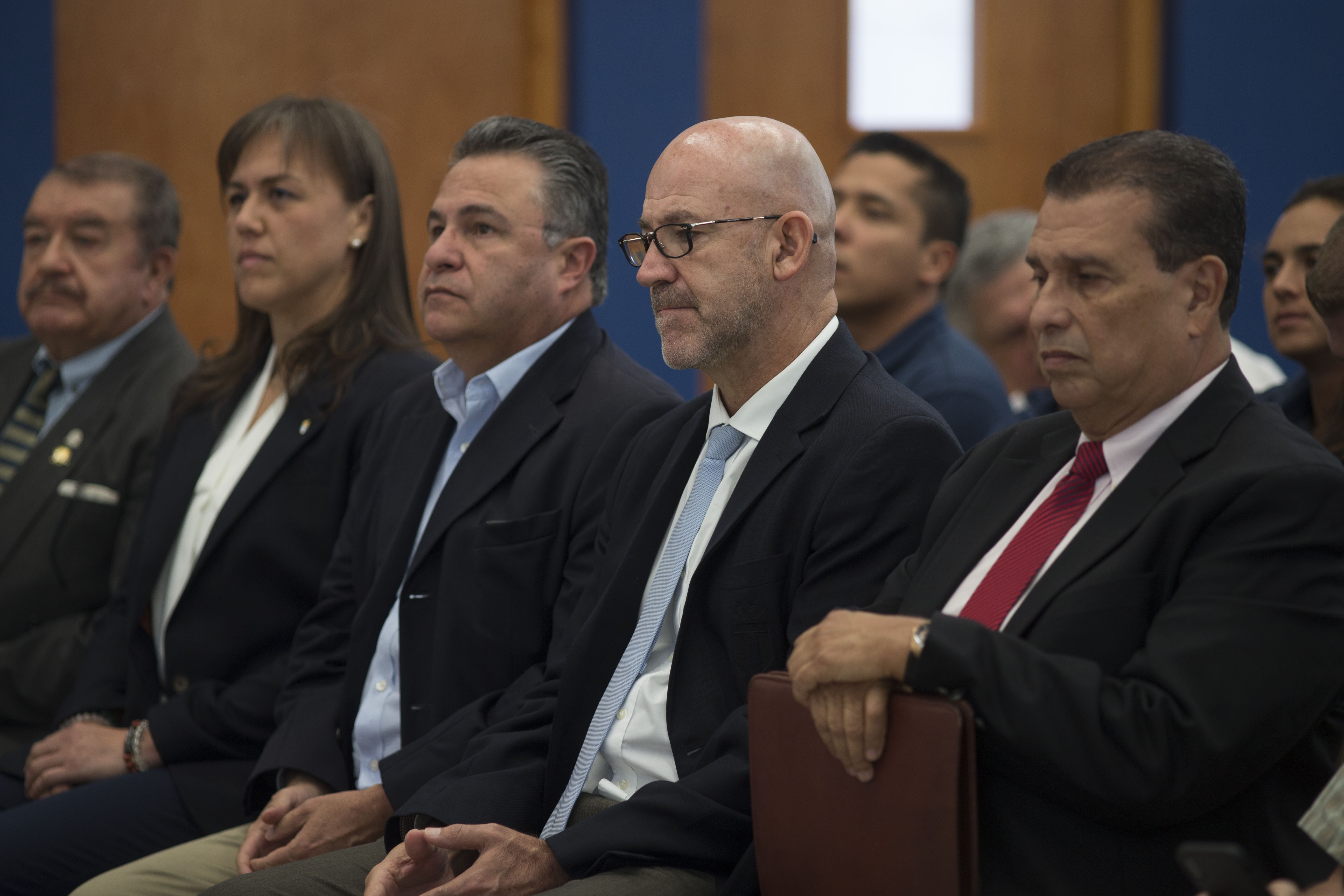Squash and Racquetball: US$ 2.6 million for two unfinished projects
12 min. de lectura
The Squash and Racquetball National Associations are waiting for their sports facilities since CDAG granted contracts between 2006 and 2007. After Q20 million quetzales in executed payments, any of these sports disciplines have their own space for training.
Near the Sports Center Dome, in zone 13, in the grand esplanade Guatemalan Autonomous Sports Confederation (CDAG Spanish acronym) where its velodrome is located, and has been there10 years ago now, two unfinished facilities of what one day was The Racquets Center.
The first facility, the gymnasium designed for squash players could train, was contracted in 2006, and, the second facility, the National Sports Racquetball Association and Administrative facilities, were awarded in 2007. However, a decade later, the Racquets Center still has no bouncing balls and it is the biggest example of the inefficient management of the resources allocated to CDAG gray construction work.
Even though neither of these two facilities are operating, both were settled in 2016 with Q20 million quetzales in total, amount that almost double the sum settled on the two first contracts. In both cases, according to the follow-up documents for the buildings, the squash and racquetball courts were built without international regulatory measures, the materials used and the work details were changed over the last ten years.
These two facilities were a couple of the many requested by the Sports Confederation during the government of Sergio Castro Basteguieta, as CDAG’s Executive Committee President (2005-2009) and with José Alex Dwight Monrieff Ramírez as general manager. An executive committee, that, according to the General Comptroller’s Office (CGC Spanish acronym) report had a 94 percent failures in expenditure execution.

The Squash Gymnasium was not finished and cost twice as much
The ground to build the Squash facilities was put out on tender in 2006, and after ten bidders applied, finally, the contract was awarded to Ingeniería Integral (an Engineering company) of Rodrigo Benjamín de Jesús Rendón, for Q5 million 255 thousand 752 quetzales (US$ 681304.02) When the construction work was awarded, Ingeniera Integral had not worked for the State yet.
According to the signed contract, the gymnasium designed with ten courts, should be finished eight months after, on June, 30th, 2007.
During 2006, the construction work suspended because of the lack of authorizations from the different entities to be executed. (See timeline). In 2017, after the suspension was lifted, the contractor started to ask, according to different information from the records, further expansions of the project were approved by many responsible people in charge. In June, 2009, the balance could be increased to Q8 million 600 thousand 677 quetzales (US$1114907.22), than three million budgeted, this supposed an increase of 65 percent, regarding the construction work´s starting price.
In June, 2009, according to the National System of Public Investment (SNIP, Spanish Acronym) information, from the General Planning Secretariat (SEGEPLAN, Spanish acronym), the physical progress of the building was at 20 percent execution, while the financial management was 74 percent.
The project was stalled as of 2009, when the next CDAG Executive Committee took office, led by Gerardo Aguirre, to November, 2013; when the additional contract for budgetary expansion was signed and extra expansions started to be granted. This was settled in 2016, for the amount of Q9 million 165 thousand 252 quetzales (US$ 1188093.17); 75 percent higher than the initial amount.
In fact, in the further expansion of this construction work, the Squash facilities were no longer a gymnasium and also became the administrative facilities of this association.
Currently, while the building was already in use to accommodate the administrative staff, the players couldn´t train in the ten Squash courts yet, and were surrounded by fences and didn´t have equipment yet.
«The courts cannot be standardized for international games because they were made from block», Devik Osorio, ex CDAG vocal.
Without regulatory measures
Devik Osorio, served as CDAG Committee Spokesperson and, granted the contract, and over the telephone said: the courts “were built with block”, instead of the construction material that initially was devised, and, resulting tracks with measurements over regulation.
“The courts cannot be standardized for international games because they were made from block. They cannot be used for International Squash International Federations´ international tournament”. When asked for a reason he answered: “because of the inefficiency of the two previous governments (of CDAG Executive Committee)”.
However, the measures issue, was already solved, as Maicol Padilla said, manager of the National Squash Association. “They have regulatory measures: 8 out of 10 courts”, explained. “The problem is when the design was made, it wasn´t too realistic, space was left for a particular brand, ABS, which is a really expensive brand, so, the space left between each court is 10 centimeters”, said.
When asked about some type of negligence with this contract, Padilla explained “there were inconsistencies”; “When Gerardo Aguirre took part of CDAG there were already doubts, CDAG needed to be intervened by the General Comptroller´s Office, to supervise the gray construction work project; and, CGC ruled in 2010 that it was possible to continue with the construction work”, said Padilla.
Padilla said since 2017, they have a consultancy with the World Squash Federation for certified suppliers that are going to equip the facilities. According to Padilla, the facilities will finally open in 2019. The material for equipping comes this year from the US. “Staves have to be installed, the frontal wall, the frontix, glass panels and the aerial fabric”.

La CDAG, entidad responsable de este contrato, no respondió a la entrevista solicitada para ahondar en los detalles sobre este, como el cambio de materiales utilizados en el proceso o los motivos de la demora en la construcción. Un cuestionario de preguntas fue enviado a Francisco Ardón, jefe de comunicación social de CDAG, pero nunca fue respondido a pesar de las sucesivas peticiones.
Actualmente, los 120 asociados en Squash entrenan en el Club Los Delfines, las instalaciones de la CDAG en zona 15 donde se encuentra ubicada la piscina olímpica.

Racquetball Facilities: construction work without regulatory measures
The facilities and administrative offices for the National Racquetball Association, the sports discipline which in August, 2018 let Ana Gabriela Martínez win the World Championship Cup in Costa Rica, have a very similar path as the Squash facilities, but; these facilities are still far from being used.
In the case of the Racquetball building, the construction work has not been taken by CDAG because it considered the construction work as “inconvenient to CDAG interests”. Thus, the players keep training in the private club La Villa, which the National Racquetball Association pays monthly for the scholarship recipient athletes; meanwhile, a building that cost Q7.5 million quetzales (US$ 9722262.71) remains abandoned in zone 13.
The Racquetball construction work tender came up one year after the one for Squash, in August, 2007. Again, ten bid were presented, among the most outstanding are two construction firms belonging to the Guerra Family, where one of its members, Carlos Gabriel Guerra Villeda, was associated to the process for illicit electoral funding in the State’s Co-optation case. Finally, Héctor Leonel Ambrocio Concúa, owner of Metro Contrucciones (Construction firm) won the bid, with a bid of Q7 million 631 thousand 047 quetzales (US$ 989213.92). The building of these facilities have received, the approval for five budgetary increases since 2007. Eventually, it was settled in 2016, for Q 11 million 120 thousand 600 quetzales (US$ 1441565.26) a 45 percent increase to the amount charged the first contract.
In June, 2016, the construction work ceased, the request of the Racquetball Association Manager, Erny Julio Escobar García, in order to perform “the playground measure modification, as well as the measurement of areas, accurate measurements and natural and artificial lighting”. The suspension was lifted in September, 2016, and, even though it is in Guatecompras (Guatemalan website for Public Procurement and State Contracting System) as a settled project; it hasn´t been taken by CDAG. According to records from May, 2017: “the reception of the construction work is inconvenient to CDAG interests”.
Currently, the Guatemalan Autonomous Sports Confederation has not approved the construction work delivery, according to the last records. Based on various inspections, CDAG certifies that there is a lack of contract terms, especially, the safety measures and specific details about the completion of the construction work.
«the reception of the construction work is inconvenient to CDAG interests», according to records from May, 2017.
Erny Escobar, Racquetball National Association Manager, said the measures were already adjusted, and; the building´s current situation is unknown. He suggested contacting CDAG for further information about the contract or the construction work. He explained: “We have interfered in technical matters, as court measures, to comply with the International Federation, as to hold international events. That is already resolved”, “The construction work was supposed to be delivered by this year, but; I do not how it has been managed”, concluded.
CDAG again, declined to answer an interview about this construction work, and; neither answered the questionnaire sent for this purpose.
The National Racquetball Association rents the Club la Villa facilities in order for the members of this sport to play and train. Since 2015, according to the information contained in Guatecompras website; this club has received Q220 thousand 499 quetzales (US$ 28621.64) in total since then. The Racquetball Association pays, monthly, approximately Q5 thousand quetzales (US$649.02) for the athletes to train, and; also, pays some administrative offices in La Galería Building, in zone 9. However, the manager, Erny Escobar said that the association has paid that place for a long time for the scholarship recipient members.
Héctor Leonel Ambrocio Concúa, the engineer hired for the work on the construction, has received Q55 million 109 thousand 671.25 million (US$ 7153453.04) since 2005 in State contracts from individual companies with the commercial names Héctor L. Ambrocio C. and, Metro Construcciones.
In 2005, Ambrocio was hired by CDAG to build the Gazolla Football Players School, in the Zacapa Sports Complex. He was paid Q2 million 335 thousand 533 quetzales (US$ 305757.49) in 2005, but; in the Guatemalan historical records, there is no evidence of the delivery of the construction works.
In addition, in 2007, Ambrocio was hired, also by CDAG, to lay a synthetic track for track and field in the Quetzaltenango Sports Complex, a construction work that started with a budget for Q7 million 800 thousand quetzales (US$ 1012470.81) and it was increased to Q9 million 435 thousand 467 quetzales (US$ 1224760.89).

Three terms of execution for the construction works
The construction of the gymnasium for the Squash Association and the Racquetball facilities has been dragging along three different CDAG’s Executive Committees. This was approved during the government of Sergio Castro, who led a polemic Executive Committee from 2005 to 2009, pointed out by the General Comptroller´s Office, and from this committee several of its members were later, in other government seats.
Among those are, Devik Osorio and Fernando Augusto Castillo, that later, took a seat in the government of Partido Patriota (a political party). Castillo, CDAG´s Purchasing Manager, was appointed as Sports General Director (DIGEF, Spanish acronym) and, Devik Osorio, who served as Second Spokesperson, was appointed Vice-Minister of Sports, even though he had to resign after two months because the General Comptroller´s Office pointed him out on his CDAG involvement in poor management.
From 2007 and 2009, the Sports Confederation also hired, Juan Carlos Monzón´s services, ex-Vice-President Roxana Baldetti´s private secretary, for more than Q13 million quetzales (US$ 1687451.36), through his companies: Canchas Deportivas de Guatemala, S.A., and; Integral de Servicios y Comercio, S.A., from 2003 to 2006. According to an article published in elPeriódico (Guatemalan newspaper) Monzón, “was the boss” in the CDAG purchases.
Another member of these Executive Committee, Fredy Arnoldo Rodríguez Chilel, who held the seat as spokesperson, was hired by the current government, and holds the seat as Sports Representative for Vice-President Jafeth Cabrera.
Another member of these Executive Committee, Fredy Arnoldo Rodríguez Chilel, was hired as Sports Representative for Vice-President Jafeth Cabrera
In the elPeriódico article, it verifies that the General Comptroller´s Office (CGC, Spanish acronym) “found failures in 94 percent of the Confederation´s investment fund from 2005 to 2009. Among those, are the misappropriation of funds bound for sports forecasts and numerous shortcomings in the tender processes”.
From 2009 to 2013, during the years in which Gerardo Aguirre, today, in charge of the Guatemalan Olympic Committee (COG, Spanish acronym), led CDAG, the Squash work construction project as well as the Racquetball facilities were stalled. In 2013, after Dennis Alonso was elected president of the Confederation, the construction work as once again, executed. In 2016, the construction for both was finished, and, according to SNIP both physical executions are completed to 100 percent; and, also, paid 9 and 11 million quetzales (US$ 1168235.55 and, US$1427843.46), were settled by CDAG in 2016.
The Racquets Center, that great promise for the promotion of these two sport disciplines, that also was considered for badminton facilities, went along losing its jump-start. Despite all the granted budget increases, these block giants, don´t have a large number of the details initially considered, as to construction of sports courts, for both projects, with regulatory measures that differ from the international standards. Ten years later, neither of these is equipped for the players to train.

